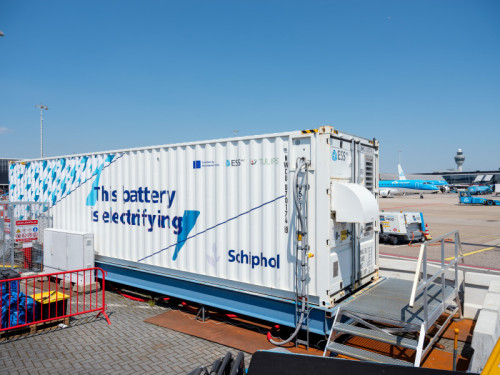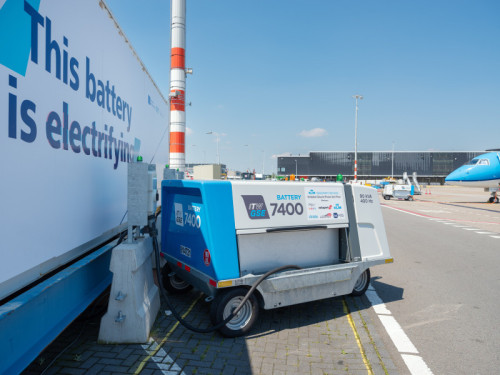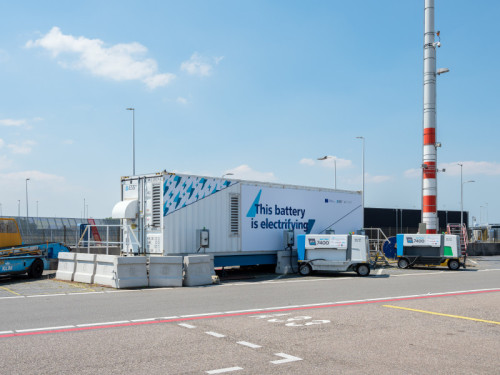June 2024
In a world exclusive, Schiphol is taking a major step toward energy storage and the further electrification of ground equipment with the arrival of an Iron Flow Battery at the airport. The large battery, recently installed on the A/B apron, offers a reliable power supply for the charging of electrical equipment and thus relieves pressure on the grid. The test with the innovative battery is part of the TULIPS programme.
Extensive testing
The Iron Flow Battery will be tested extensively over the coming months. During the trial period, the battery will be supplying the electric Ground Power Units (e-GPUs) on the A/B apron with electricity. The e-GPUs provide power to parked planes at locations with no fixed electricity supply. This means that, when combined with a Preconditioned Air Unit (PCA) that provides fresh air on board, the aircraft’s auxiliary engine can remain switched off when on the ground. This ensures better air quality on the apron and a reduction in noise.


More natural and safer components
The Iron Flow Battery is distinguished by its use of natural components. In contrast to commonly used lithium batteries, the battery works using iron and salt water – materials that are widely available, have a lower environmental impact and are fire safe. The capacity of the battery remains constant for up to 20 years.
“I am extremely proud of this innovation. The Iron Flow Battery is a great example of how we as an airport want to lead the way with innovative infrastructure that improves the quality of work. During the test period, the focus is on user-friendliness, reliability and efficiency. If the result is successful, more batteries will follow, with the aim of making all ground equipment emission-free and electric.” – Sybren Hahn, Executive Director Infrastructure, Schiphol
Development and collaboration
The Iron Flow Battery was developed and built by ESS Inc in Oregon, USA. Schiphol’s innovation team brought the technology to the airport. Volker Infra and KES are responsible for the management and use of the battery. The battery is partly subsidised by the EU and part of TULIPS. The programme runs until the end of 2025 and aims to accelerate the development of innovations that can make airports more sustainable. This is in line with Schiphol’s ambition for its own airport activities to be emission-free and waste-free by 2030, and to be energy positive by 2050. Working towards a quieter, cleaner and better Schiphol.

